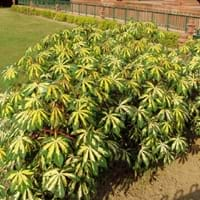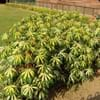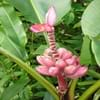Life Span
Perennial
Perennial
Type
Tender Perennial
Flowering Plants, Fruits, Trees
Origin
South America, Brazil
Central Asia
Types
Not Available
Aceymac apple, Bailey Sweet apple, Dabinett apple, Nehou apple
Number of Varieties
Not Available
Habitat
Canyons, gardens, Grassland, Rainforest, Shaded sites
Hillside
USDA Hardiness Zone
8-13
5-8
AHS Heat Zone
Not Available
9-1
Sunset Zone
H2, 19, 20, 21, 22, 23, 24
A1, A2, A3, 8, 9, 10, 11, 12, 13, 14, 15, 16, 17, 18, 19, 20, 21, 22, 23, 24
Habit
Upright/Erect
Oval or Rounded
Flower Color
White, Red
White
Flower Color Modifier
Bicolor
Not Available
Fruit Color
Brown
Green, Red
Leaf Color in Spring
Green, Light Yellow, Ivory
Dark Green
Leaf Color in Summer
Dark Green, Light Yellow, Ivory
Green
Leaf Color in Fall
Dark Green, Light Yellow, Ivory
Brown, Green, Light Yellow
Leaf Color in Winter
Light Green
Not Available
Leaf Shape
Palmate
Oblong
Plant Season
Spring, Summer, Fall, Winter
Spring
Sunlight
Full Sun, Partial Sun
Full Sun, Partial shade
Type of Soil
Loam, Sand
Loamy
The pH of Soil
Acidic, Neutral
Neutral
Soil Drainage
Average
Well drained
Bloom Time
Late Spring, Summer, Fall
Fall, Summer
Tolerances
Drought
Drought
Where to Plant?
Ground
Ground
How to Plant?
Stem Planting
Grafting, Seedlings, Transplanting
Plant Maintenance
Medium
Medium
Watering Requirements
Keep the ground moist but not water-logged, Prefer drip-irrigation instead of Over-head watering, Reduce watering in winter, Requires watering in the growing season
Medium
In Summer
Lots of watering
Lots of watering
In Spring
Moderate
Moderate
In Winter
Average Water
Average Water
Soil pH
Acidic, Neutral
Neutral
Soil Type
Loam, Sand
Loamy
Soil Drainage Capacity
Average
Well drained
Sun Exposure
Full Sun, Partial Sun
Full Sun, Partial shade
Pruning
Prune if you want to improve plant shape, Remove damaged leaves, Remove dead leaves, Remove deadheads, Shape and thin as needed
Prune when plant is dormant, Remove dead or diseased plant parts
Fertilizers
All-Purpose Liquid Fertilizer, Fertilize before watering, fertilize every 2-3 weeks while growing
All-Purpose Liquid Fertilizer
Pests and Diseases
Mites, Red blotch, Scale, Thripes, Whiteflies
Aphids, Canker, Caterpillars, Powdery mildew, Root rot
Plant Tolerance
Drought
Drought
Flowers
Insignificant
Yes
Flower Petal Number
Single
Single
Foliage Texture
Coarse
Medium
Foliage Sheen
Glossy
Matte
Allergy
Not Available
Mouth itching, Throat itching
Aesthetic Uses
Not Available
Not Available
Beauty Benefits
Not Available
Not Available
Environmental Uses
Air purification
Air purification
Medicinal Uses
Cancer
Cancer, constipation, Diabetes, Diarrhea, Dysentry, Fever, Heart problems, Tooth ache
Part of Plant Used
Whole plant
Fruits
Other Uses
Animal Feed, Culinary use, Used as Biofuel, Used in making beverages
Used As Food, Wood is used for making furniture
Used As Indoor Plant
No
No
Used As Outdoor Plant
Yes
Yes
Garden Design
Feature Plant, Herb / Vegetable, Mixed Border, Tropical
Fruit / Fruit Tree, Shade Trees, Showy Tree
Botanical Name
MANIHOT esculenta 'Variegata'
Malus domestica
Common Name
Variegated Cassava, Variegated Tapioca
Apple Tree
In Hindi
Variegated Cassava
सेब का वृक्ष
In German
Verändertes Cassava
Apfelbaum
In French
panaché manioc
Pommier
In Spanish
abigarrado Yuca
Manzano
In Greek
Κυμαίνεται Cassava
μηλιά
In Portuguese
variegated de mandioca
Macieira
In Polish
Kolorowy Maniok
jabłoń
In Latin
variegated Cassava
Arbore
Phylum
Not Available
Magnoliophyta
Class
Not Available
Magnoliopsida
Order
Malpighiales
Rosales
Family
Euphorbiaceae
Rosaceae
Clade
Angiosperms, Eudicots, Rosids
Angiosperms, Eudicots, Rosids
Tribe
Manihoteae
Not Available
Subfamily
Crotonoideae
Not Available
Number of Species
Not Available
Season and Care of Variegated Cassava and Apple Tree
Season and care of Variegated Cassava and Apple Tree is important to know. While considering everything about Variegated Cassava and Apple Tree Care, growing season is an essential factor. Variegated Cassava season is Spring, Summer, Fall and Winter and Apple Tree season is Spring, Summer, Fall and Winter. The type of soil for Variegated Cassava is Loam, Sand and for Apple Tree is Loamy while the PH of soil for Variegated Cassava is Acidic, Neutral and for Apple Tree is Neutral.
Variegated Cassava and Apple Tree Physical Information
Variegated Cassava and Apple Tree physical information is very important for comparison. Variegated Cassava height is 240.00 cm and width 180.00 cm whereas Apple Tree height is 25.00 cm and width 20.00 cm. The color specification of Variegated Cassava and Apple Tree are as follows:
Variegated Cassava flower color: White and Red
Variegated Cassava leaf color: Green, Light Yellow and Ivory
Apple Tree flower color: White
- Apple Tree leaf color: Dark Green
Care of Variegated Cassava and Apple Tree
Care of Variegated Cassava and Apple Tree include pruning, fertilizers, watering etc. Variegated Cassava pruning is done Prune if you want to improve plant shape, Remove damaged leaves, Remove dead leaves, Remove deadheads and Shape and thin as needed and Apple Tree pruning is done Prune when plant is dormant and Remove dead or diseased plant parts. In summer Variegated Cassava needs Lots of watering and in winter, it needs Average Water. Whereas, in summer Apple Tree needs Lots of watering and in winter, it needs Average Water.





